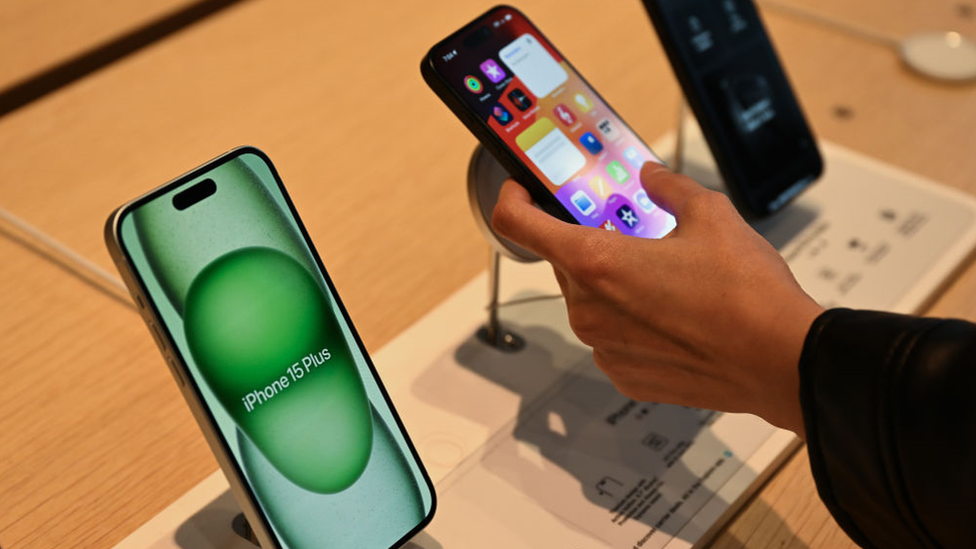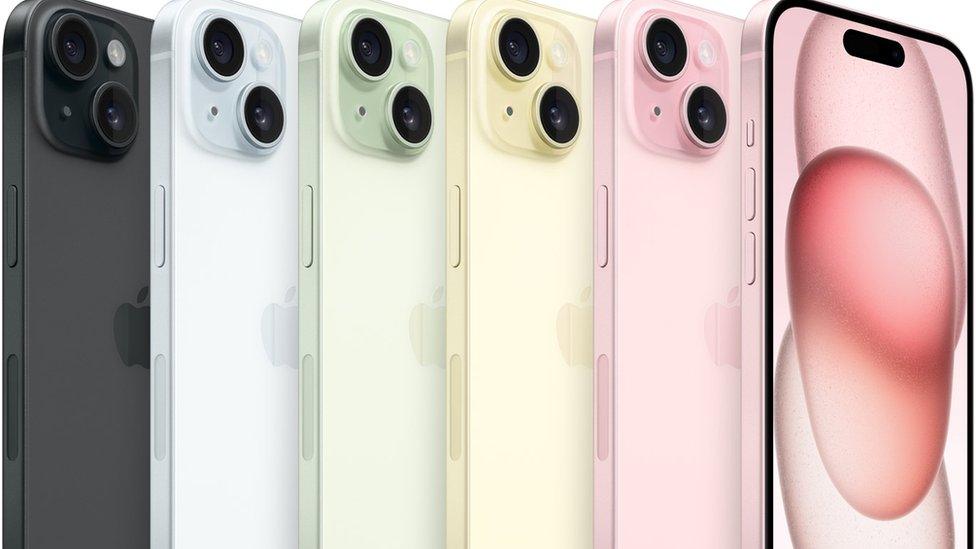Why your new Apple iPhone 15 is overheating
- Published

Apple has blamed a bug in its operating system and updates to apps such as Instagram for its new iPhone 15 overheating.
Since the latest model of the smartphone went on sale in September, some users have complained the devices are getting too hot to touch.
Apple said there was a bug when updating iOS 17 on the phone.
But it also claimed that changes to third party apps are "causing them to overload the system".
iPhone users have come to expect their devices to become hotter during the initial set-up or when they are being backed up, due to the amount of processing power being used and the handset working overtime - but these issues with the iPhone 15 have been worse.
Users took to social media to complain the new phones were searing.
Allow X content?
This article contains content provided by X. We ask for your permission before anything is loaded, as they may be using cookies and other technologies. You may want to read X’s cookie policy, external and privacy policy, external before accepting. To view this content choose ‘accept and continue’.
Apple said that the device may feel warmer in the first few days "after setting up or restoring the device because of increased background activity."
The company said: "We have identified a few conditions which can cause iPhones to run warmer than expected."
This includes a bug in iOS 17 which is the latest version of Apple's software which is accessible for its most recent models.
It said that "another issue involves some recent updates to third-party apps that are causing them to overload the system," and it is working with app developers on fixes that are in the process of being rolled out.
Among the apps blamed for the problem are Instagram, Uber and the video game Asphalt 9, according to Apple.
Instagram already fixed the issue with its app last week.
The upcoming iOS 17 bug fix will not reduce performance in order to address the iPhone's temperature.
Apple stressed that the warming phones is not related to the new titanium casing that houses the iPhone 15 Pro and iPhone 15 Pro Max instead of the stainless steel used on older smartphones.
It also dismissed speculation that the overheating problem was anything to do with the new USB-C port that allowed it to comply with a mandate issued by European regulators.
Apple said the issue is not a safety or injury risk and will not impact the phone's long-term performance.
- Published15 September 2023

- Published13 September 2023

- Published8 September 2023
